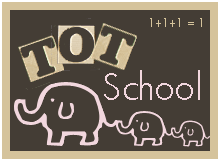Sort, order, compare and use comparative language to describe small sets of objects by length, area, volume.
Compare 2 and 3 dimensional shapes and id shapes and solids in the environment (triangles, squares, rectangles, circles, cubes, spheres, cylinders, and cones).
Use a variety of materials to create geometric shapes and solids and build copies of simple shapes and designs by direct observation and by visual memory.
Describe the position, location and direction of objects (inside, outside, top, bottom, close and closer).
Sequence events on by before and after a date or time.
Estimate the amount of objects in a handful and then county to verify.
Estimate the amount of objects in a set using benchmarks of 10 and count to determine if the estimate is more or less.
Explore, describe and discuss strategies to estimate length, area, temperature and weight using nonstandard units to compare.
Explore using everyday objects as nonstandard units to measure length, area, capacity.
Compare the length of 2 objects using a balance scale and identify which is heavier.
Task 1:
Make a box with block shapes (square, circle, rectangle, triangle) and geometric solids (sphere, cube, cone, cylinder). Give the box to the student and have him identify each shape.
Ask him to do the following:
Put the rectangle in the box
Put the cone on top of the rectangle
Put the circle next to the rectangle
Put the cube near the box
Put the cylinder closer to the box than the cube
Put the sphere inside the box
Put the triangle above the box
put the square somewhere of your choice and tell me where you put it
Task 2:
Show the student a calendar and ask:
What is this and for what is it used?
What is today's date?
What will be the date tomorrow?
What was yesterday's date?
A Day in the Life of _______
Have child put the following words in chronological order - morning, afternoon, night. Draw a picture of something you do during each time and tell about it.
Task 3:
Draw a rectangle. Model how to estimate how many scrabble tiles will cover the rectangle using one tile as a guide. Write down the estimate. Cover the rectangle using the tiles. Count the number of tiles used. Discuss the difference if applicable. Take the tiles and place them in one side of a balance scale (HOW CAN I MAKE MY OWN BALANCE SCALE OR WHERE CAN I BUY ONE?). Find an object whose weight you would like to compare to the tiles. Estimate which side will be heaver. Place the object in the scale and note the actual finding.
Subscribe to:
Post Comments (Atom)


No comments:
Post a Comment